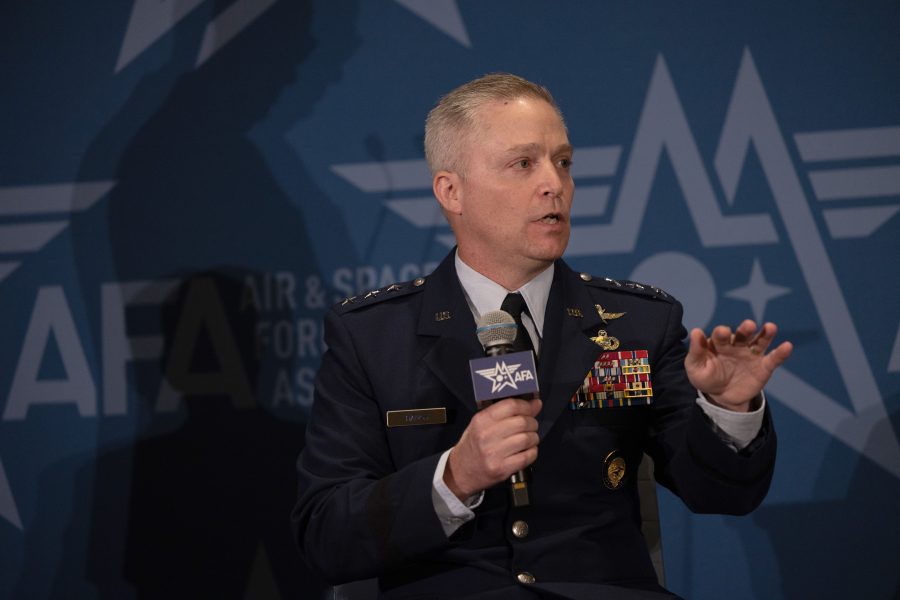Airmen took command of two major defense intelligence organizations Feb. 2, as Gen. Timothy D. Haugh succeeded Army Gen. Paul M. Nakasone as head of U.S. Cyber Command, and Lt. Gen. Jeffrey A. Kruse became director of the Defense Intelligence Agency.
Haugh is the first Airman to lead CYBERCOM, which was founded in 2010 and only became a unified combatant command in 2017. Kruse is the first Airman to lead the DIA since 1996.
As head of CYBERCOM, Haugh is also director of the National Security Agency, continuing the dual-hat arrangement that has existed for the past six years. Haugh voiced support for the double assignment during his Senate confirmation hearing. In his new roles, Haugh leads some 27,000 military and civilian staff, the vast majority employed at NSA, the nation’s foremost signals intelligence agency. He will be the chief officer responsible for countering cyber warfare threats from Russia, China, North Korea, and others.
Haugh moves up after 18 months as Nakasone’s deputy. Prior to that, he commanded Air Forces Cyber, also known as the 16th Air Force. He has commanded at the squadron, group, wing levels as well, and had a stint as director of intelligence at CYBERCOM.
As the 16th Air Force’s first commander after its reactivation, Haugh was tasked by Air Combat Command boss Gen. Mark D. Kelly with leading ACC’s shift in culture from a focus on short-term combat to one of long-term competition. In that role, he built a new command responsible for cyber, spectrum, and information warfare, areas in the so-called “gray zone” of conflict.
Now he’ll lead the nation’s joint cyber forces as they look to combat growing threats. Just a few days before he assumed command, the FBI announced it had shut down a Chinese-backed hacking group that was targeting critical U.S. infrastructure. In January, a report alleged North Korean hackers had targeted information security professionals. And Russia has used cyber warfare to attack critical Ukrainian infrastructure during their invasion.
Haugh is the fourth Airman currently leading a combatant command, the most the service has had since May 2010. Gen. Jacqueline D. Van Ovost heads U.S. Transportation Command, Gen. Anthony J. Cotton is in charge of U.S. Strategic Command, and Gen. Glen D. VanHerck will lead U.S. Northern Command for a few more days before handing off to Air Force Gen. Gregory M. Guillot. Space Force Gen. Stephen N. Whiting also leads U.S. Space Command.
DIA
Kruse takes over at DIA after spending the last four years as the military adviser to the Director of National Intelligence. He’s also commanded at the squadron, group, and wing level within the Air Force and had stints as director of intelligence for U.S. Indo-Pacific Command and Combined Joint Task Force-Operation Inherent Resolve, the U.S.’s anti-ISIS campaign.
DIA is both a component of the Pentagon and a member of the Intelligence Community, with more than 16,000 employees. It provides intelligence on foreign militaries for combat-related missions and for the secretary of defense, Joint Chiefs, and combatant commands.
“The world is in the throes of several concurrent challenges: geopolitical, technological, military, economics, and increasingly in the economic space,” Kruse said during the change of command ceremony. “My pledge is to ensure DIA remains an irreplaceable source of insights into tailored action … in securing the nation’s future.
